Current News
/ArcaMax
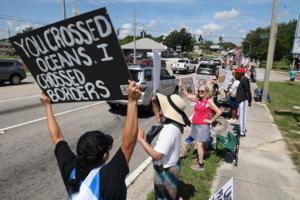
ICE training opens door to Central Florida deputies handling immigration arrests
ORLANDO, Fla. — Nearly 170 Central Florida sheriff’s deputies have completed training allowing them for the first time to arrest people for immigration violations, as local authorities move to execute a critical piece of President Donald Trump’s mass deportation agenda.
Under a Florida law passed earlier this year, city and county law ...Read more
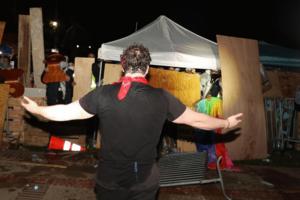
Plea deal ends hate crime case from attack on pro-Palestinian encampment at UCLA
LOS ANGELES — A man charged with a hate crime for his role in a wild mob attack on a pro-Palestinian encampment at UCLA last year has entered a diversionary program to avoid jail time, marking the end of the first and only felony case filed in connection with the violence.
Malachi Marlan-Librett, 28, was charged with assault with a deadly ...Read more
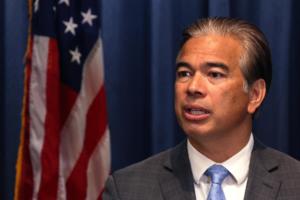
States sue over USDA demand for SNAP recipients' data
A coalition of liberal-led states filed a federal lawsuit Monday challenging the U.S. Department of Agriculture's recent demand that they turn over the personal information of millions of people receiving federal food assistance through the Supplemental Nutrition Assistance Program.
USDA Secretary Brooke L. Rollins informed states earlier this ...Read more

Trump wants Murdoch deposed within 15 days on Epstein story
President Donald Trump asked a judge to order Rupert Murdoch to sit for a deposition within 15 days in the president’s $10 billion libel lawsuit against The Wall Street Journal over a story about Jeffrey Epstein, arguing an expedited schedule is justified due to the executive’s advanced age.
In a court filing Monday, Trump’s lawyer said ...Read more

Israelis rebuff Trump, insisting images of starvation in Gaza are 'fake'
WASHINGTON — The Israeli government is defending a top military officer who dismissed images of starving Palestinians as “fake” over the weekend, despite President Donald Trump stating Monday that he believes the pictures are real.
The rupture comes amid growing international pressure on Israel over dire circumstances in the Palestinian ...Read more
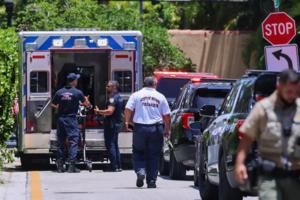
2 children dead, 1 unresponsive after barge hits sailboat in Florida's Biscayne Bay
Two young children died at the hospital after a large barge crashed into a summer camp sailboat they were on near Hibiscus Island off Miami Beach Monday morning, according to the U.S. Coast Guard.
A third child on the boat was taken to Ryder Trauma Center at Jackson Memorial Hospital and was unresponsive as of Monday afternoon, said Petty ...Read more
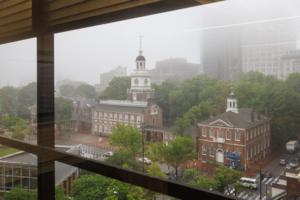
More than a dozen slavery displays in Philly, including at Washington's former home, have been flagged for a Trump administration review
PHILADELPHIA — More than a dozen displays at Independence National Historical Park that share historical information about slavery during the founding of United States have been flagged for a content review in connection with an executive order from President Donald Trump.
Materials within the President’s House Site, the Benjamin Franklin ...Read more
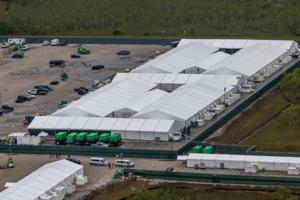
Federal judge wants more information about Alligator Alcatraz's legal authority
A federal judge in Miami said Monday he wants the DeSantis and Trump administrations to provide more information about the legal agreement governing the operations at Alligator Alcatraz as lawyers representing detainees question the very legality of the immigration detention site.
“We need to get to the bottom of the interplay between the ...Read more

Under pressure, UC admits a record number of Californians; racial diversity remains strong
The University of California system admitted its largest ever class of California undergraduates for fall 2025, while also maintaining a diverse student body and increasing the number of students who are the first generation in their family to attend college, according to preliminary data released Monday.
The University of California also ...Read more
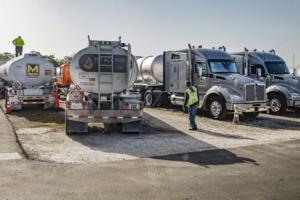
Who's in charge at Alligator Alcatraz? 'We've gotten a lot of runaround'
MIAMI — Immigration attorneys and environmental activists — even the Mexican government and the Archdiocese of Miami — have all asked who’s in charge at Alligator Alcatraz.
They say they can’t get a straight answer.
“We’ve gotten a lot of runaround,” Archbishop Thomas Wenski told the Miami Herald after trying unsuccessfully to ...Read more
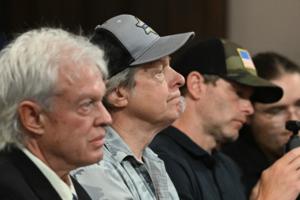
Feral swine or domestic pig? DNR's wild hog probe involved undercover hunt at Ted Nugent's farm
LANSING, Mich. — About a month before his fiery testimony against the state's Department of Natural Resources, conservative rocker Ted Nugent beat the agency in court on allegations that he was illegally hosting hunts of Russian boar.
Nugent's was one of six Michigan facilities in 2021 targeted by an undercover operation in which DNR officers...Read more
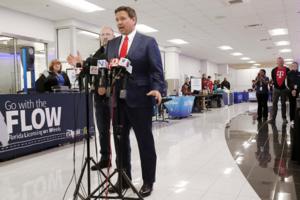
Company that rescued Floridians from strife-torn Haiti claims state hasn't paid
TALLAHASSEE, Fla. — A global rescue and disaster recovery company that helped evacuate Floridians from Haiti last year during a period of civil unrest has sued the state for $7.5 million, claiming Florida failed to pay the company for its role in the rescue efforts.
In a lawsuit filed in federal court in Tallahassee on Thursday, TAD Recovery ...Read more
2 children dead, 1 unresponsive after barge hits sailboat in Florida's Biscayne Bay
MIAMI — Two young children died at the hospital after a large barge hit a sailboat they were on near Hibiscus Island off Miami Beach on Monday morning, according to the U.S. Coast Guard.
A third child on the boat was taken to Ryder Trauma Center at Jackson Memorial Hospital and was unresponsive as of Monday afternoon, said Petty Officer 3rdh ...Read more

Walmart stabbing suspect arraigned in Traverse City district court
TRAVERSE CITY, Mich. — A Cheboygan man accused of randomly stabbing 11 people at a Walmart outside Traverse City over the weekend was arraigned Monday afternoon on multiple charges, but not before he told a magistrate he didn't want to be in the courtroom or talk to court officials.
Bradford Gille, 42, was arraigned on one count of terrorism ...Read more

Fatalities reported after shooting at casino in Reno; suspect in custody
Police in Reno, Nevada, detained a suspect Monday morning after a shooting reported by authorities at the city’s Grand Sierra Resort, according to local news outlets.
Early news reports said multiple people were injured in the shooting, although it remained unclear how many were hurt. The Reno Gazette-Journal, citing a city council member, ...Read more

NYC transit union threatens to sue GOP mayoral hopeful Curtis Sliwa over 'defamatory' comments
NEW YORK — The politically influential Transport Workers Union is threatening to sue Republican mayoral candidate Curtis Sliwa over “defamatory and false” comments he recently made about the labor group.
In a letter sent to Sliwa on Monday, John Samuelsen, the TWU’s international president, wrote that the mayoral hopeful engaged in the ...Read more

Shuttle Discovery's Texas transfer launches cost concerns
WASHINGTON — The Smithsonian Institution is resisting an effort from Texas lawmakers to transport the space shuttle Discovery from a Virginia museum to Houston, home of Mission Control, in a battle framed by the cost.
Texas GOP Sens. John Cornyn and Ted Cruz included in the reconciliation law a provision that would authorize the relocation of...Read more

Judge shields all Planned Parenthood clinics from defunding
WASHINGTON — A federal judge on Monday issued a preliminary injunction blocking language in the GOP budget reconciliation law that made Planned Parenthood ineligible for Medicaid reimbursements for one year.
U.S. District Judge Indira Talwani had granted a preliminary injunction last week blocking the provision for only some Planned ...Read more

Republicans brush aside Trump plan to slash NIH funding
WASHINGTON — House Republican appropriators plan to disregard the White House’s proposed 40% cut to the National Institutes of Health budget for fiscal 2026, according to multiple sources with knowledge of the situation.
Instead, the funding levels being discussed are similar to what’s currently appropriated, they said.
Republicans in ...Read more

Trump: I never had 'privilege' of visiting Jeffrey Epstein's island
President Donald Trump on Monday said he never had the “privilege” of visiting Jeffrey Epstein’s private island as he shed new details on his split from the notorious pedophile who was once his close friend and neighbor in Palm Beach, Florida.
Brushing off questions about Epstein, Trump again suggested the firestorm over Epstein was ...Read more
Popular Stories
- EU, US reach deal to avoid Trump tariff hike before deadline
- Tom Lehrer, Harvard's satiric, melodic mathematician, dies at 97
- Man trespasses three times at Minnesota Capitol in 24 hours -- once naked -- arrested on Wisconsin warrant
- Biologists are tracking Jamestown Canyon virus, detected in Pennsylvania mosquitoes
- EU reaches broad tariff deal with US to avert painful trade blow





